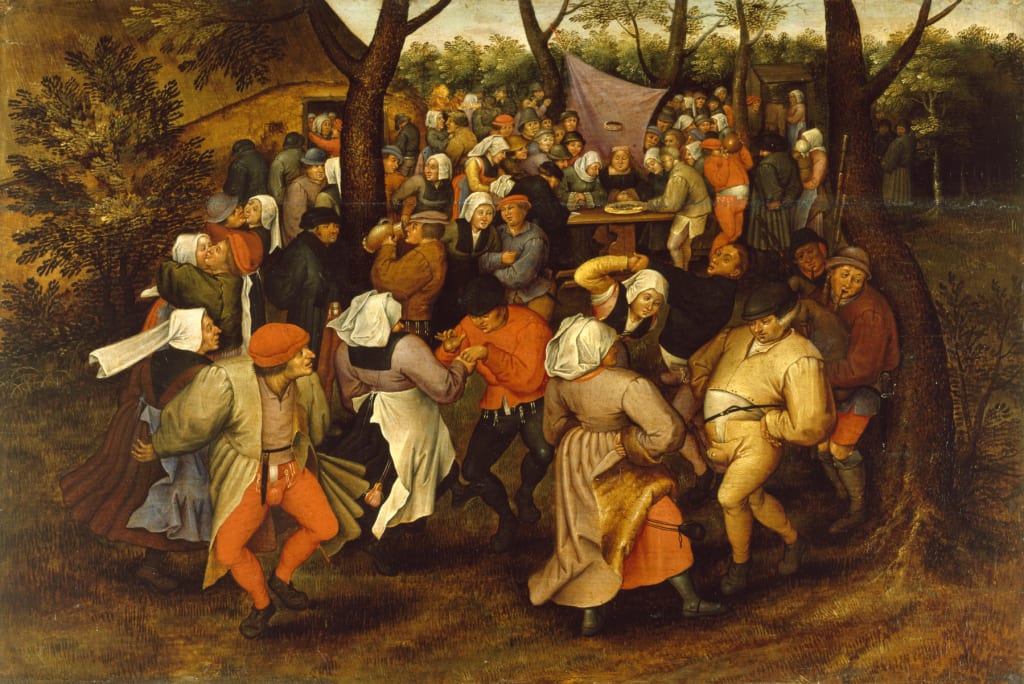They DANCED To Death: The 'Dancing Plague' of 1518
Historical Mysteries

In the summer of 1518, a bizarre and bewildering event unfolded in the city of Strasbourg, then part of the Holy Roman Empire. This event, known as the Dancing Plague, saw dozens of people inexplicably dancing uncontrollably, sometimes for days on end. The origins, nature, and causes of this peculiar phenomenon have puzzled historians and scholars for centuries, making the Dancing Plague one of history's most enigmatic episodes.
The strange occurrence began in July 1518 when a woman named Frau Troffea stepped into the streets of Strasbourg and began to dance fervently. Her movements were not those of joy or celebration; rather, they appeared frantic and involuntary. She danced ceaselessly for hours, seemingly unable to stop despite exhaustion and physical pain. Within a week, dozens of others had joined her, similarly caught in the throes of uncontrollable dancing.
The city authorities, baffled and alarmed, sought the counsel of local physicians and learned men. The initial diagnosis was "hot blood," a condition thought to be caused by an overheated bloodstream. To cure the afflicted, the authorities believed they needed to dance it out of their systems. Accordingly, they hired musicians and cleared public spaces to encourage and accommodate the dancing.
However, rather than abating, the epidemic worsened. Reports suggest that as many as 400 people became involved, dancing until they collapsed from exhaustion, injury, or worse. Contemporary accounts note that some dancers even succumbed to heart attacks, strokes, or sheer fatigue. The sight of people writhing in dance, seemingly against their will, created an atmosphere of panic and confusion.
To understand the Dancing Plague, historians have proposed several theories. One leading explanation is mass hysteria, a phenomenon where psychological distress manifests as physical symptoms in a large group of people. Strasbourg in 1518 was a city under severe stress. The region was grappling with a series of hardships, including famine, disease, and political instability. These stressors may have created a fertile ground for a collective psychological disorder.
Another theory suggests that ergot poisoning could have been the culprit. Ergot is a toxic mold that grows on damp rye and other grains, and consuming it can lead to convulsions, hallucinations, and other symptoms. The ergotism hypothesis posits that those affected by the Dancing Plague might have ingested contaminated grain, triggering their erratic behavior. However, this theory has its limitations, as ergotism typically results in more widespread and varied symptoms than just dancing.
Religious and supernatural explanations were also prevalent at the time. Some contemporaries believed the dancing was a curse or a divine punishment. The local clergy, for instance, suggested that the afflicted were being punished for their sins. In response, religious ceremonies and processions were organized to seek divine intervention. The dancing was eventually curbed when the afflicted were taken to a shrine dedicated to Saint Vitus, the patron saint of dancers and epileptics, where they prayed for relief.
The authorities’ initial measures—encouraging more dancing and hiring musicians—proved disastrously counterproductive. The decision to address the crisis by promoting further dancing inadvertently exacerbated the situation, leading to more cases and greater distress. Eventually, the realization dawned that containment and seclusion might be more effective. The afflicted were isolated, and slowly, the plague began to subside.
The Dancing Plague of 1518 remains an enduring historical mystery, primarily because of the lack of comprehensive contemporary records and the complexity of human psychology. While the precise causes of the epidemic may never be fully understood, the event highlights the profound impact of stress, environment, and collective behavior on human health. It also underscores the importance of accurate medical and psychological interventions in addressing public health crises.
In modern times, the Dancing Plague has captured the imagination of writers, artists, and scholars, becoming a symbol of the inexplicable and the surreal. It serves as a poignant reminder of the thin line between order and chaos, sanity and madness, and the known and the unknown in human history. As an episode of mass psychogenic illness, it continues to be studied and referenced, offering valuable lessons about the nature of human suffering and the responses to it.
Ultimately, the Dancing Plague of 1518 is a testament to the complexities of the human condition and the enduring mysteries of the past. Whether viewed through the lens of medical science, psychology, or social history, it remains a fascinating and cautionary tale about the power of the mind and the societal impacts of collective stress and trauma.
About the Creator
Marveline Merab
“History never repeats itself. Man always does.”
― Voltaire
Enjoyed the story? Support the Creator.
Subscribe for free to receive all their stories in your feed. You could also pledge your support or give them a one-off tip, letting them know you appreciate their work.






Comments
There are no comments for this story
Be the first to respond and start the conversation.